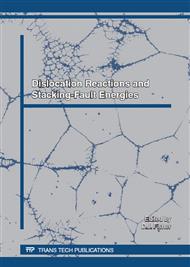p.1
p.11
p.19
p.29
p.35
p.45
p.55
p.63
p.69
Study of Production Defects in Pure Aluminum and 3003 Aluminum Alloy by Electrical Measurements
Abstract:
To Study the Defect Properties in the Crystal, it Is Necessary that they Are Present in Sufficiently High Concentration. Electrical Measurements Are Also One of the Oldest Techniques Used in Materials Science. this Paper Aims to Discuss the Possibility of Using Electrical Measurements as Diagnostic Techniques for Detecting Defects in a Set of Plastically Deformed Pure and 3003 Al Wrought Aluminum Alloys. the Results of Electrical Measurements Were Analyzed in Terms of the Variation of Resistivity. this Model Can Be Used to Investigate both the Defect and Dislocation Densities of the Samples under Investigation. Results Obtained by Means of Electrical Techniques Have Been Reported. Plastic Deformation Was Performed, and I-V Curves Were Measured in Order to Determine the Value of the Resistivity. the Values of Resistivity as a Function of Deformation and Annealing Behavior Were Studied. One of the Goals of the Work Was to Obtain the Activation Energy for the Formation of Defects by Performing Electrical Measurements on both Materials (pure Al and 3003 Al Alloys ).
Info:
Periodical:
Pages:
11-18
Citation:
Online since:
July 2012
Authors:
Price:
Сopyright:
© 2012 Trans Tech Publications Ltd. All Rights Reserved
Share:
Citation:


